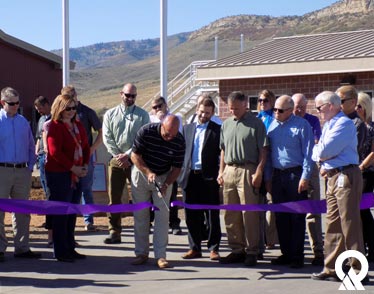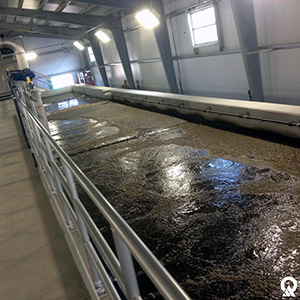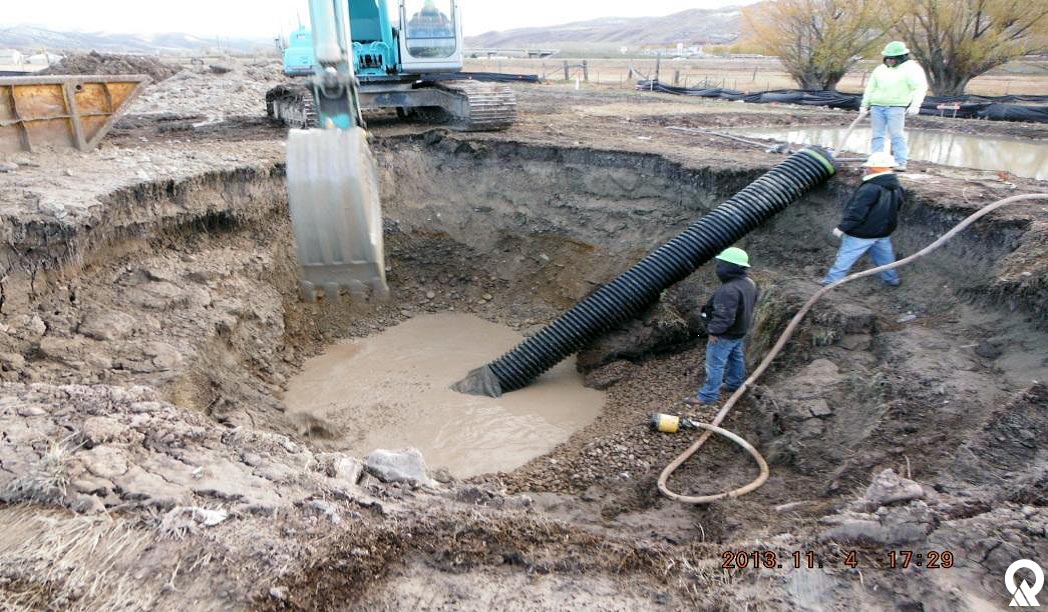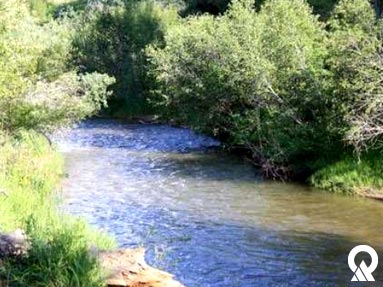By Lisa Nelson, P.E.

On September 23, 2015, on a beautiful sunny day in the mountains of Summit County, members of Utah’s Water Quality Board, along with Trever Johnson and Duane Schmidt, current and former mayors of Coalville City, gathered together with the Coalville City Council for a ribbon-cutting ceremony to celebrate the completion of the city’s brand new wastewater treatment plant.
I work in the Division of Water Quality’s Engineering Section, where I administer the Clean Water State Revolving Fund (CWSRF) Program. This program provides funding to communities for a wide range of water quality infrastructure projects. Coalville City is one of those communities that approached the Water Quality Board for planning funds. But the Coalville project turned out to involve much more than planning, and it was anything but routine. Their story is extraordinary, both for its unique circumstances and the circuitous path the project took to reach completion.
A Question of Land Ownership
In June 2008, the mayor of Coalville City, Duane Schmidt, along with the city’s engineering firm, JUB Engineers, approached the Division of Water Quality (DWQ) for financial assistance. The city needed to upgrade their fifty-year-old treatment plant to address problems with its aging infrastructure and the city’s need to accommodate growth.
Much to everyone’s surprise, the city discovered they didn’t actually own the land underneath their treatment plant. It had actually been built on property owned by the United States Bureau of Reclamation (BOR) that had been leased to the city on a fifty-year lease set to expire in October, 2014.
Aware they didn’t have much time before the lease expired, Coalville City came to the Water Quality Board for financial planning assistance to put together the necessary documents to purchase or extend the lease from BOR. At that time, BOR was in the middle of doing extensive upgrades to the nearby Echo Dam and was unable to sell or extend the lease because of potential flooding issues. At the end of this negotiation process, it became clear that the city had no other option but to abandon the old plant and build a new treatment plant. The only problem? Finding the nearly $12 million that this project would cost.
Funding Problems

The city and JUB worked tirelessly to apply for funds from various funding sources, including the United States Department of Agriculture – Rural Development (RD), the Army Corps of Engineers, and the Water Quality Board (WQB). After an extensive application process, Coalville City successfully put together the required funding with assistance from these sources.
In August 2010, the Army Corps of Engineers awarded the city a $5 million Section 595 grant for this project. With the balance of funds coming from the WQB and RD, the city had finally garnered the last bit of necessary funding to build the new treatment plant.
The city moved forward with plant design and expected to be able to meet the October 2014 deadline. That is, until Mayor Schmidt received an email from the Rural Utah 595 program manager on December 30th, 2010, explaining that Congress hadn’t passed the Omnibus bill that contained the $525 million set aside for Rural Utah, despite every effort made by Senator Robert Bennett. The city would not be receiving the $5 million it had already been awarded.
To say this was a blow to the city would be an understatement. It could very well have been the demise of the project — except the city had no alternatives. They could either find the $5 million from another source, or miss the deadline and essentially become squatters on the BOR property.
Funding Solutions
The city immediately contacted the two remaining funding partners, the Water Quality Board and Rural Development. Both agencies reanalyzed their funding packages, this time without the Army Corps’ 595 funding. With a combination of design changes to reduce the cost of the project and combined additional funding of nearly $2.3 million from both agencies, the project was back on track.

But that’s not the end of the story. During construction, extensive groundwater led to difficulties with aligning sewer pipe that went nearly 22 feet deep. The pump on the nearby lift station broke, which was not budgeted for in the project. But with help from the city’s public works director and their engineering firm, these issues were resolved, and the plant was completed and is up and running.
State-of-the-Art Wastewater Treatment
The biggest success of this whole story is that the citizens of Coalville now have an affordable state-of-the-art wastewater treatment plant that will serve not just Coalville but the entire state of Utah for the foreseeable future. The plant utilizes the latest wastewater treatment technology to meet stringent water-quality limits, given that it will discharge effluent into Chalk Creek above its junction with the Weber River and Echo Reservoir. It also has the ability to treat for nutrients like nitrogen and phosphorus that can have the unwanted effect of stimulating the growth of plants and algae.

For me, one of the greatest moments of satisfaction was not just the ribbon-cutting and seeing this project to fruition, but receiving a note from Mayor Schmidt thanking us, saying that I and the entire SRF staff are “everything that is right with government”.
Learn more about the Water Quality State Revolving Fund and our financial assistance for the Coalville City Project in our Fiscal Year 2014 Annual Report.

I received my Engineering Degree from the University of Florida (not to be confused with Florida State) in 1993. After graduation I went to work at the Kennedy Space Center in Cocoa, Florida, as an Engineer where I was responsible for the safe transport, storage and disposal of Hazardous Waste. In 2007, I moved to Utah to work as an engineer for the Division of Water Quality where I have the privilege of helping communities like Coalville.
